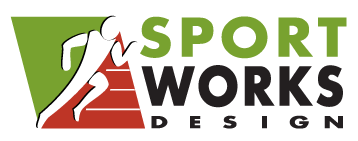Before you move forward with turning your dream facility into a reality, ask yourself these ten questions:
1. What are the goals for your stadium?
Suppose your goal includes hosting conferences or regional tournaments or meets. In that case, you’ll need to consider the minimum widths of fields, seating capacity, number of track lanes, and field events.
2. What are the operations of your facility?
When establishing facility operations, it’s important to look at vehicular and pedestrian traffic on game day, entrances in proximity to lockers rooms/ the field, and the location of security fences and gates. The separation between the field of play, fans, and athletes are an essential consideration for pre-game and half-time to ensure that all stakeholders can safely participate in the event
3. What kind of field do you want?
The type of field you choose will directly impact the cost. Whether you select natural grass or synthetic turf, the field’s surface can trigger other stadium elements like irrigation, stormwater management, additional maintenance equipment, etc.
4. What is your maintenance capacity?
Understanding the financial and manual responsibilities that come with the different athletic field surfaces is very important. Some of the higher-performing surfaces require a precise level of detail from your maintenance team on an annual basis, while others are designed to reduce maintenance requirements.
5. What sports will your stadium host?
Different sports require different field widths. When these details are not established up front, they can cause a domino effect on the rest of the programming and facility. An example is that a wider field causes the bleachers to sit further away from the center of the field of play and can affect sightlines.
6. What is the best orientation for the stadium?
The stadium’s orientation and the fields can affect the D areas’ events and how inclement weather, like wind, will affect all stakeholders in the stadium.
7. Where will the common finish be?
The track’s layout determines the common finish location and dictates where the common start line and the 110M hurdle start lines will sit. Track shoots will require additional space at the start and finish lines.
8. How much clearance do you need?
Each sport requires different vertical and horizontal obstructions, so clearance distances are necessary to keep the athletes safe.
9. Do you need a control net?
If the stadium will be used for multiple sports, ball control netting can increase safety for all athletes, coaches, and spectators on and off the field.
10. What are your state’s bleacher code requirements?
You’ll need to have a solid understanding of your state’s code requirements to get through permitting. Information you’ll need to know includes proximity to restrooms and the accessible and preferred seating capabilities.
Partnering with Sportworks Design on your upcoming project will eliminate unforeseeable hurdles and help you knock your stadium project out of the park. Interested in learning more about our innovative master plans that will help you to stay on budget? Contact us today!


Leave a comment